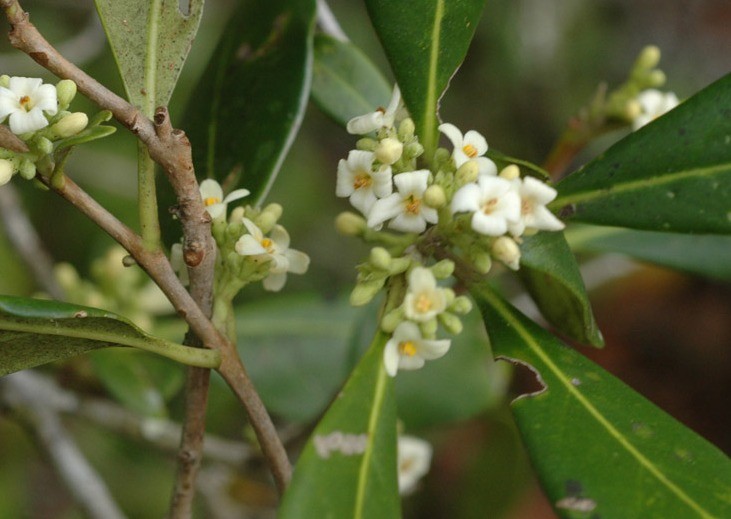American olive
(Cartrema americana)

Description
Cartrema americana, (syn. Cartrema americanus) commonly called American olive, wild olive, or devilwood, is an evergreen shrub or small tree native to southeastern North America, in the United States from Virginia to Texas, and in Mexico from Nuevo León south to Oaxaca and Veracruz. Cartrema americana was formerly classified as Osmanthus americanus. Following the discovery that Osmanthus was polyphyletic, it was transferred to the segregate genus Cartrema together with Osmanthus floridanus and five Asian species. Cartrema americana grows to 4–7 m (13–23 ft), rarely to 11 m (36 ft) tall. The leaves are 5–14 cm (2.0–5.5 in) long and 2–4 cm (0.79–1.57 in) broad, with an entire margin. Its flowers, produced in early spring, are small (1 cm long), white, with a four-lobed corolla and have a strong fragrance. The fruit is a globose dark blue drupe 6–15 mm (0.24–0.59 in) diameter, containing a single seed. It is cultivated as an ornamental plant in gardens for its fragrant flowers. Osmanthus is a genus of about 30 species of flowering plants in the family Oleaceae. Most of the species are native to eastern Asia (China, Japan, Korea, Indochina, the Himalayas, etc.) with a few species from the Caucasus, New Caledonia, and Sumatra. Osmanthus range in size from shrubs to small trees, 2–12 m (7–39 ft) tall. The leaves are opposite, evergreen, and simple, with an entire, serrated or coarsely toothed margin. The flowers are produced in spring, summer or autumn, each flower being about 1 cm long, white, with a four-lobed tubular-based corolla ('petals'). The flowers grow in small panicles, and in several species have a strong fragrance. The fruit is a small (10–15 mm), hard-skinned dark blue to purple drupe containing a single seed.
Taxonomic tree:







